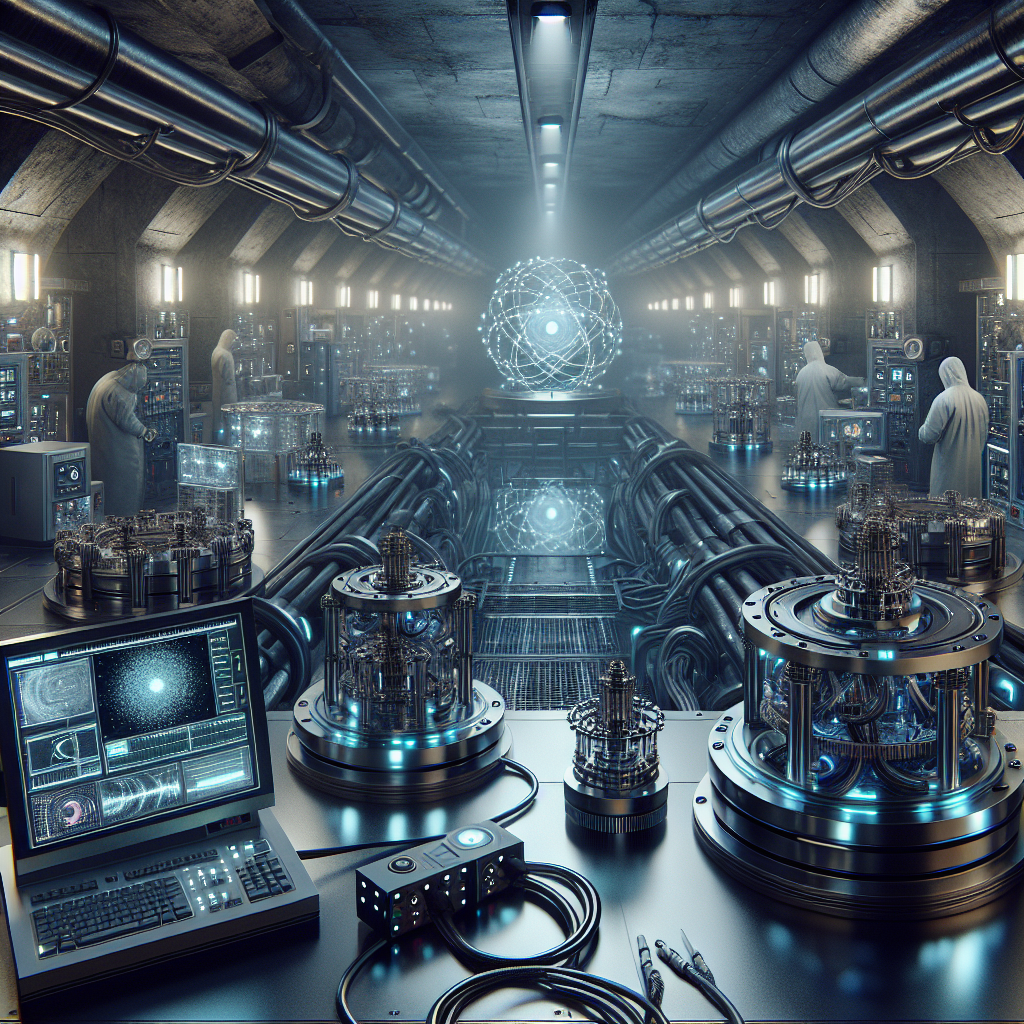
The Groundbreaking LZ Experiment: Unveiling the Mysteries of Dark Matter
The quest to understand dark matter, one of the most elusive components in the universe, steps into a new era with the results from the LUX-ZEPLIN (LZ) Dark Matter experiment. Nestled deep within the Sanford Underground Research Facility in South Dakota, this giant research endeavor involves over 200 scientists and engineers from 40 institutions worldwide. The LZ experiment aims to find weakly interacting massive particles, known as WIMPs, which are thought to constitute dark matter.
A Glimpse Inside the LZ Experiment
The LZ experiment is a sophisticated arrangement comprising three nested detectors designed to detect minute energy deposits from radioactive decay and potential dark matter interactions. At its heart lies the LZ detector, housing 10 tons of liquid xenon. This dense, noble gas is used as a medium to catch interactions with its atoms, producing light flashes that could signal the presence of WIMPs.
The recent publication of the experiment’s first run results in Physical Review Letters marks a significant milestone. These findings establish new boundaries for how dark matter might interact with familiar particles, thus refining the lens through which scientists can scrutinize WIMP behavior.
Shedding Light on Dark Matter Interactions
Sam Eriksen, a co-author of the published paper, explained the importance of considering multiple interaction hypotheses when probing dark matter. “There is no reason to believe that dark matter will interact with regular matter in the simplest way, so it is important to consider more complex interactions,” Eriksen remarked. Five types of interactions were meticulously analyzed in this first science run, which could indicate whether a WIMP comprises several charged particles or a solitary entity.
- Complex interaction hypotheses: testing these expands understanding beyond the simplest models.
- Advanced statistical analysis: crucial for differentiating dark matter signals from more common particle interactions.
The analysis involves distinguishing nuclear recoils from electron recoils originating from interactions within the xenon volume, emphasizing the fine detection capabilities of the LZ detector. Michael Williams, another paper co-author, highlighted the necessity of using statistical techniques to isolate dark matter interactions amidst regular matter events.
Important Findings and Future Prospects
Despite not observing a definitive dark matter signal to date, the LZ experiment has succeeded in defining new constraints on dark matter characteristics. “Though our first search resulted in no dark matter signals, it has constrained properties of dark matter, which in turn allows for dark matter theories to be refined,” noted Williams.
- No discovery, but significant insights: refining limits on WIMP characteristics.
- Improved understanding of detectors: yields higher energy analysis for potential discovery opportunities.
Over the coming years, continued data gathering and analysis are slated to provide even more insights. The team aims to use subsequent runs to place stronger constraints on WIMP interactions, increasing the possibility of an eventual remarkable discovery or further tightening the search net over dark matter candidates.
Eriksen emphasized the growing sensitivity of their methodologies, stating, “We are now much more sensitive to any dark matter interaction since we have more events to analyze and perform statistical measures with.” The team remains optimistic about making revolutionary discoveries in the near future or limiting the avenues for potential dark matter, indirectly advancing scientific understanding through exclusion.
Conclusion
The LZ experiment represents a monumental collaboration in the ongoing investigation of dark matter. Though its first science run didn’t confirm the presence of dark matter, the findings have laid a stronger foundation for refining theoretical models and experimental approaches. As the LZ team continues its work, the world watches eagerly for the next big breakthrough in understanding the universe’s hidden mass.
These efforts underscore the continuous, dynamic nature of scientific exploration, where each step forward, whether an outright discovery or an exclusion, helps map the intricate universe fabric.
For more details, delve into the full study: Constraints on Covariant Dark-Matter–Nucleon Effective Field Theory Interactions from the First Science Run of the LUX-ZEPLIN Experiment as published in Physical Review Letters.
- Reference: J. Aalbers et al., 2024.
- DOI: 10.1103/PhysRevLett.133.221801
As the data continues to roll in, scientists and enthusiasts alike anticipate the LZ experiment’s contributions to dark matter research and the profound questions about our universe that it seeks to answer.
Source: https://phys.org/news/2025-01-lz-science-constraints-dark-interactions.html


I don’t think the title of your article matches the content lol. Just kidding, mainly because I had some doubts after reading the article.
Thank you for your sharing. I am worried that I lack creative ideas. It is your article that makes me full of hope. Thank you. But, I have a question, can you help me?